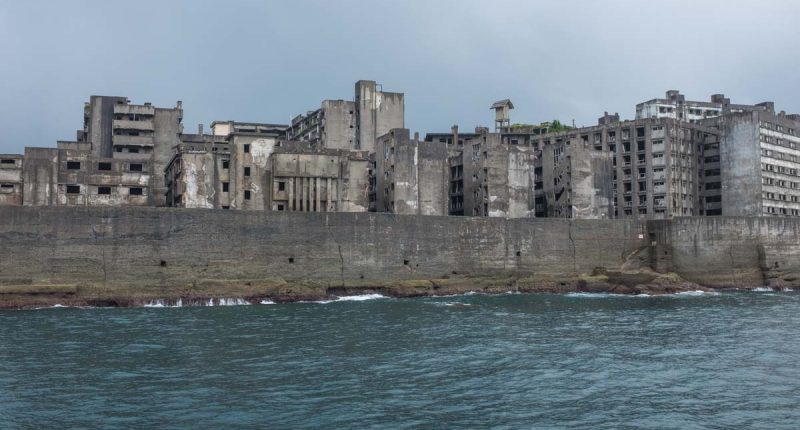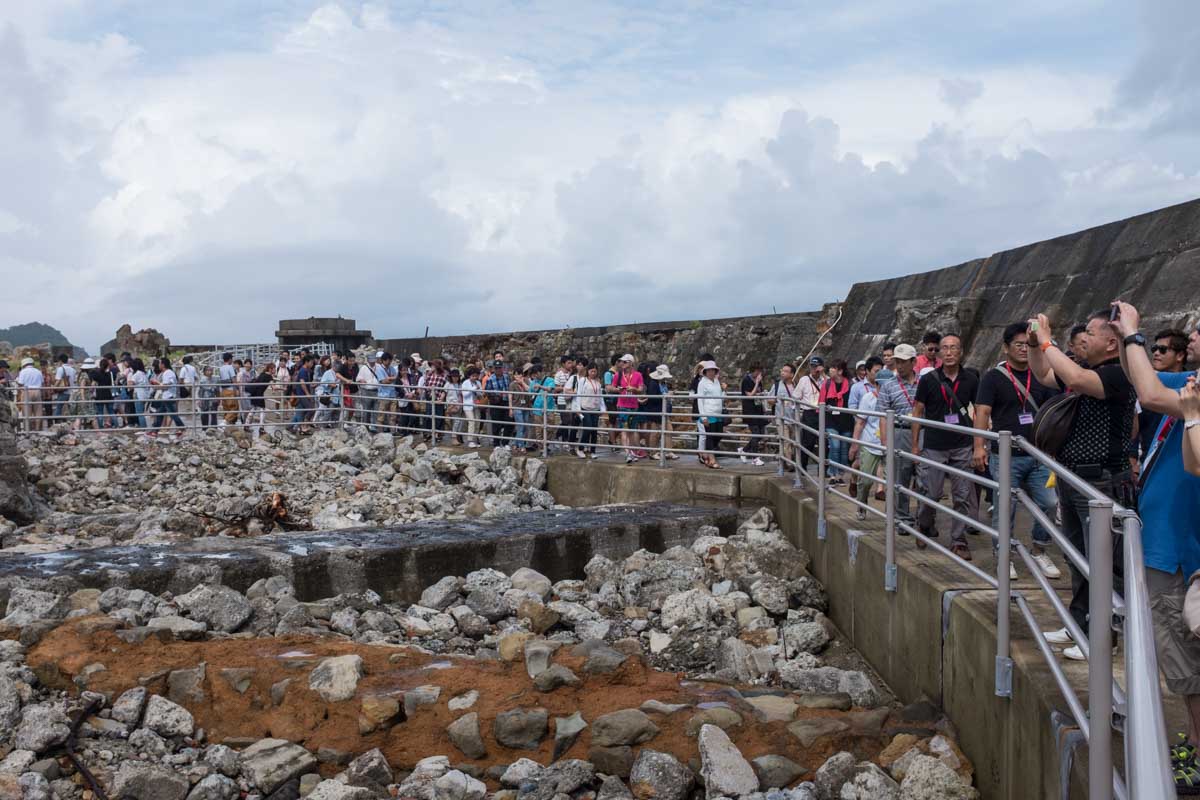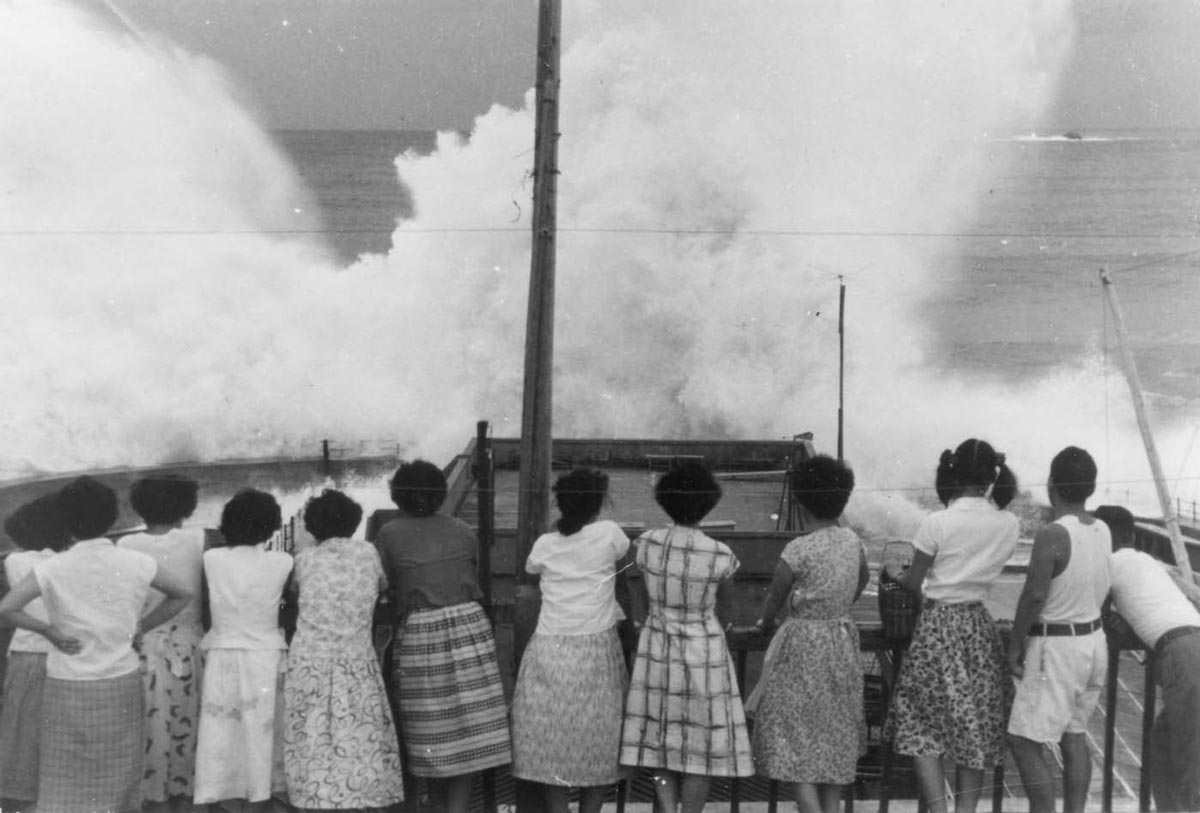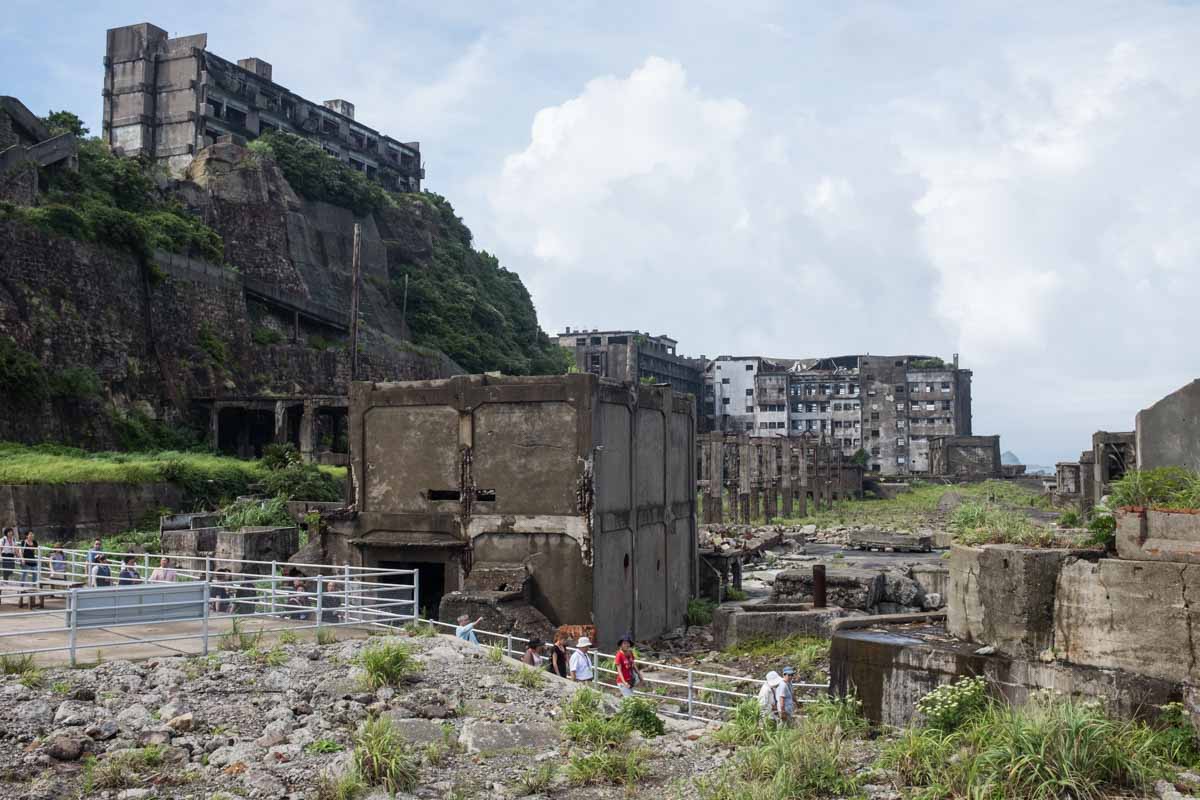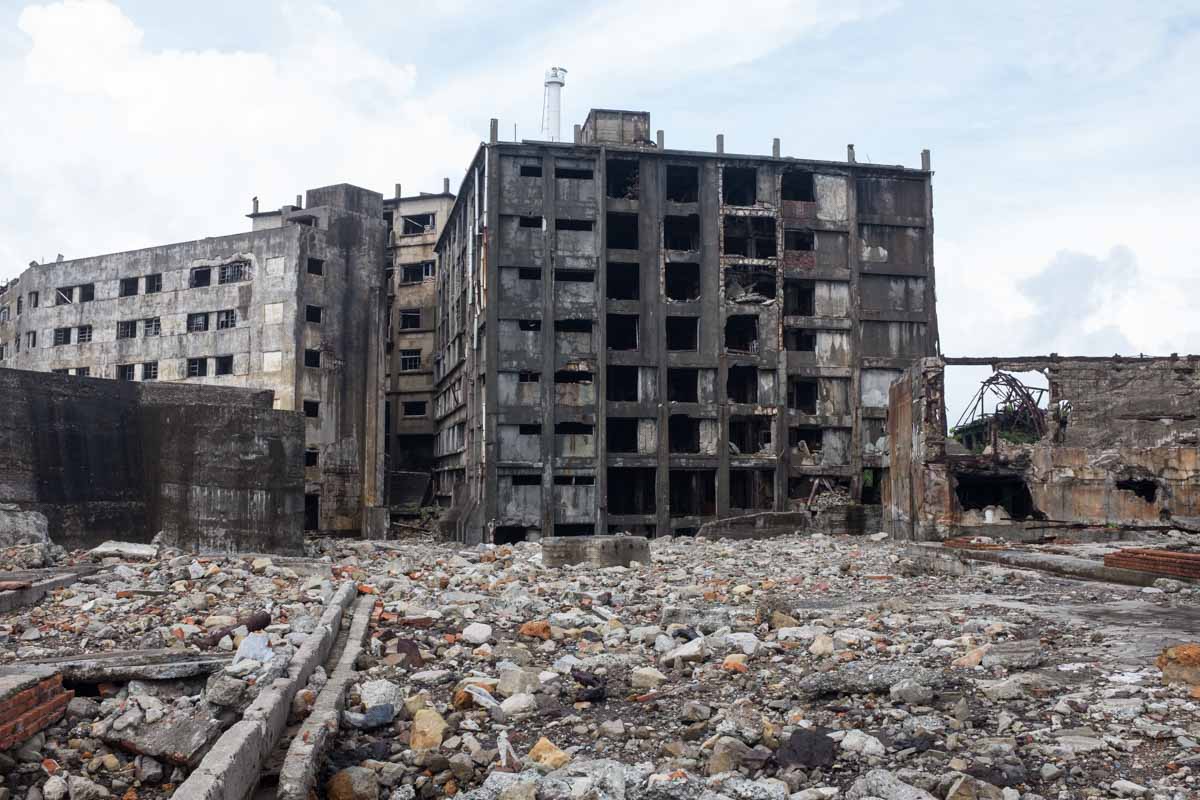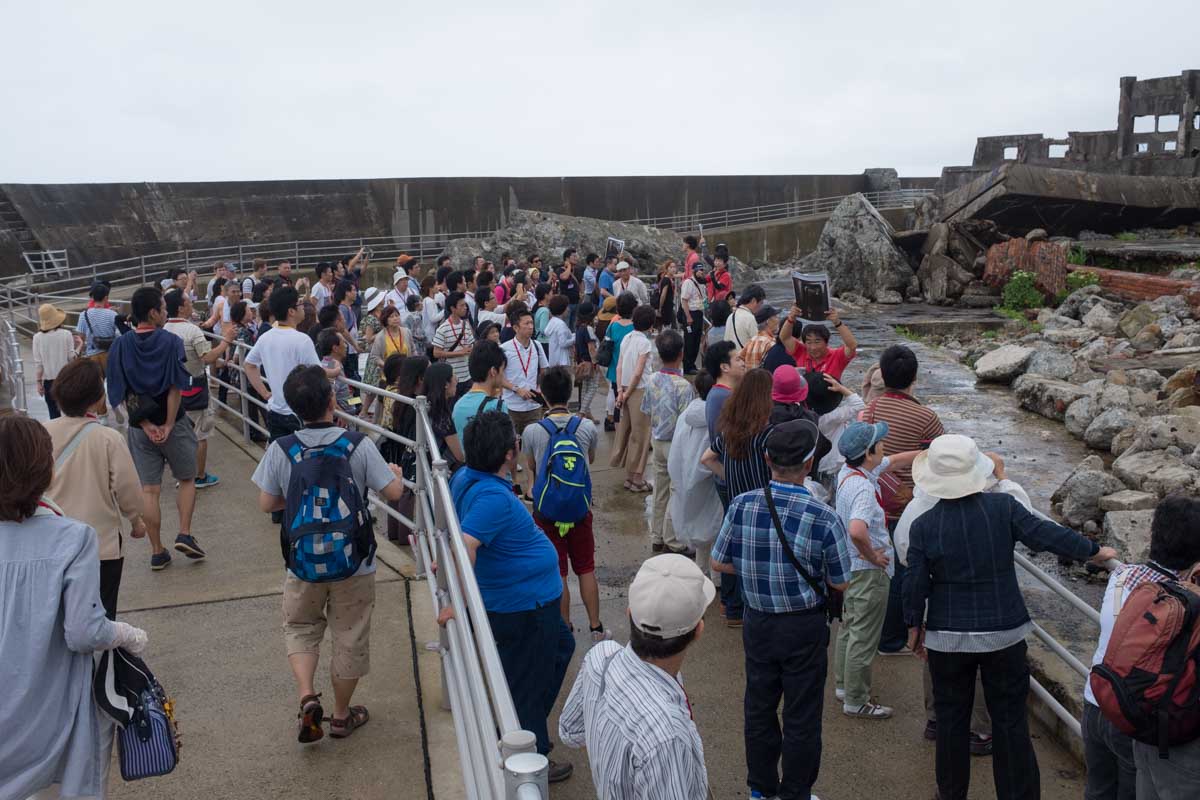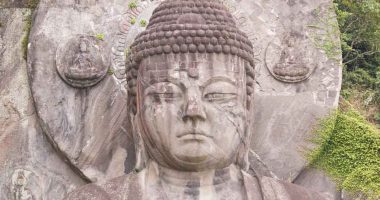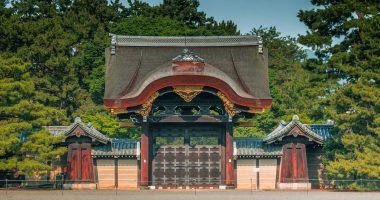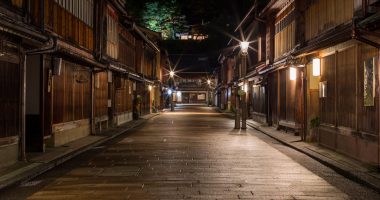Hashima Island (端島) is an abandoned island and former coal mine located about 15 kilometers from Nagasaki. It is more commonly known as Gunkanjima (軍艦島) or “Battleship Island” because, from a distance, the outline of the island and the buildings bear an uncanny resemblance to a battleship.
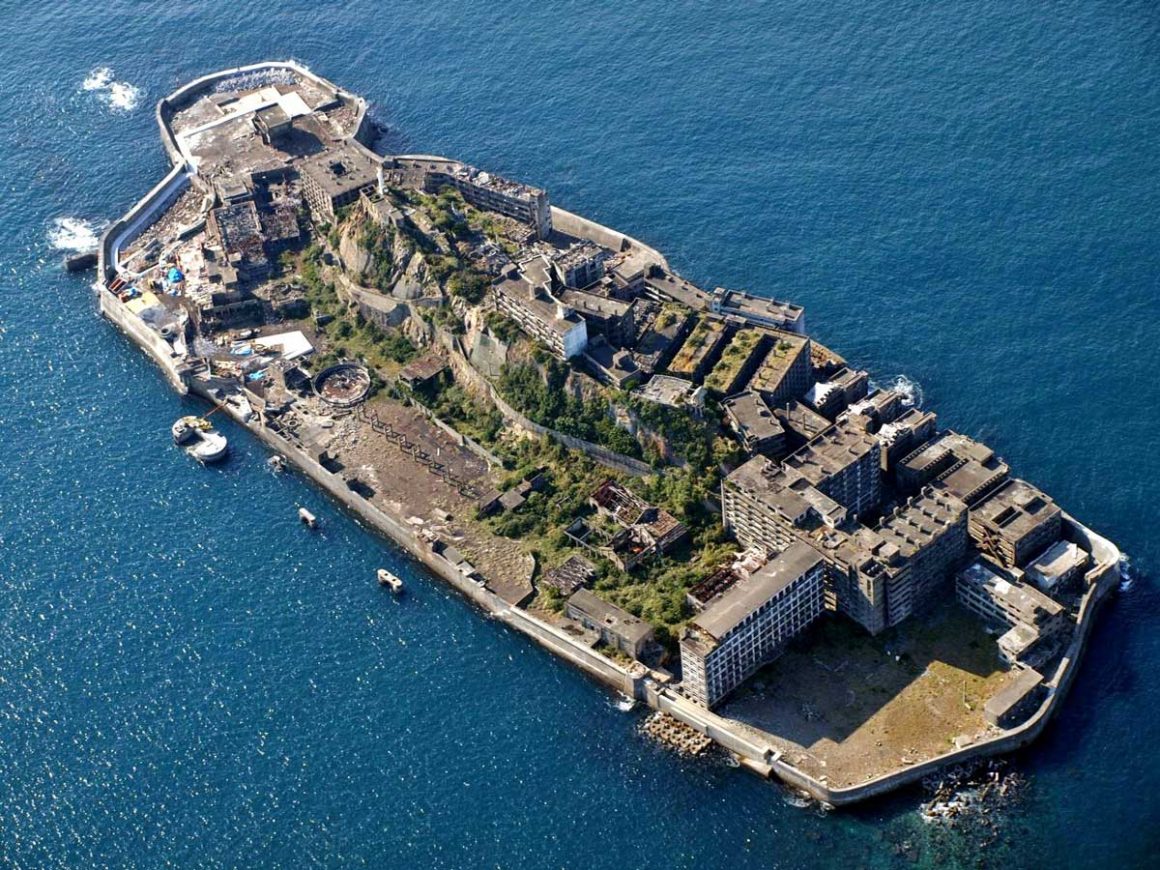
The island remained deserted for decades after mining operations ceased in 1974, but in April 2009 Nagasaki City allowed tour boats to land on the island and today it is one of Nagasaki’s most popular tourist destinations. Popular culture has also helped give the island a second lease of life: Google released a Street View of the island which included many of the areas off limits to the public and it received another PR boost when it was used as inspiration for Javier Bardem’s lair in the Bond movie Skyfall (the film includes an aerial shot of the island, but filming took place in a studio reconstruction).
The History of Hashima Island
In 1853 Commodore Matthew Perry sailed his “black ships” into Edo Bay and provided the catalyst for a chain of events that would result in the Meiji Restoration in 1868 and the ending of Japan’s policy of sakoku (“closed country”). Japan had been living in isolation—aside from limited trading with the Dutch in Nagasaki—for the over 200 years.
Japan was suddenly made very aware of its technological and industrial inferiority to the Western powers, and, fearful of the consequences having seen China’s ports carved up and traded, it embarked on one of the most ambitious industrializations ever seen. And at the heart of that industrialization was coal.
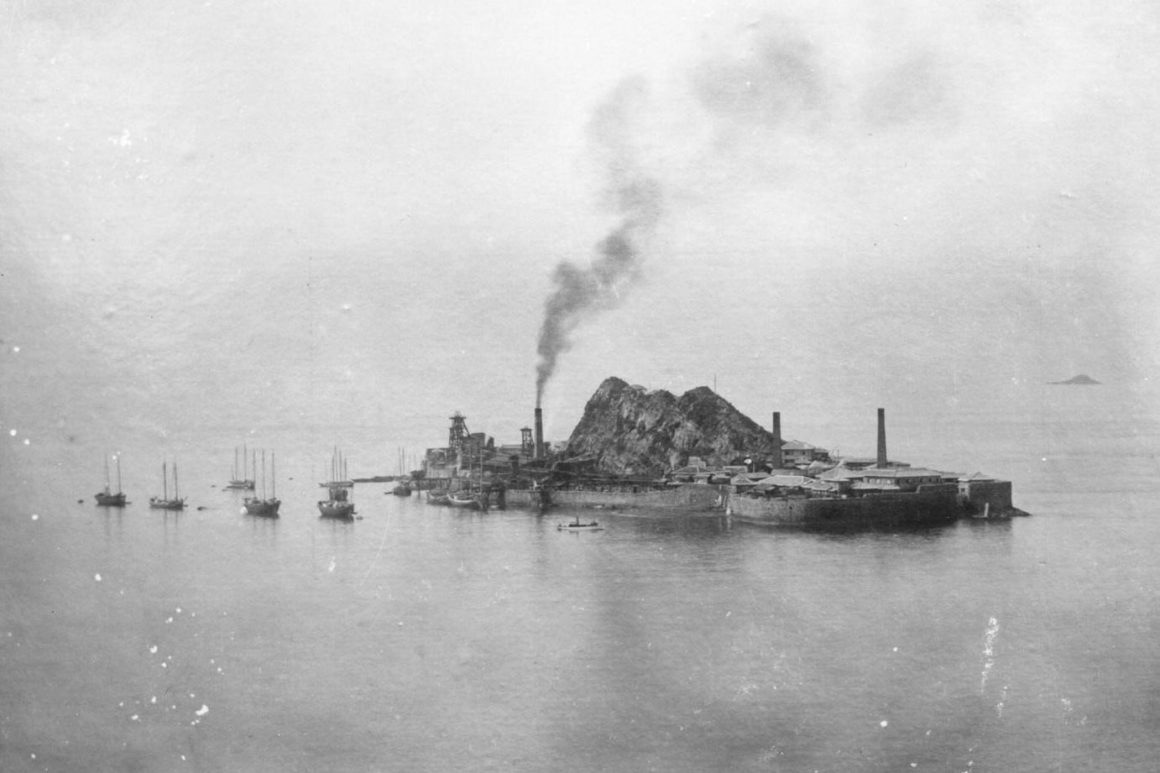
Coal was first discovered on the Hashima Island in 1810, but it was only after Mitsubishi Goshi Kaisha (Mitsubishi Group) bought the island in 1890 for ¥100,000 (about $450k in today’s money) that mining operations began in earnest. Mitsubishi undertook major works that included building sea walls and aggressive land reclamation such that the island tripled in size over the course of the next 40 years.
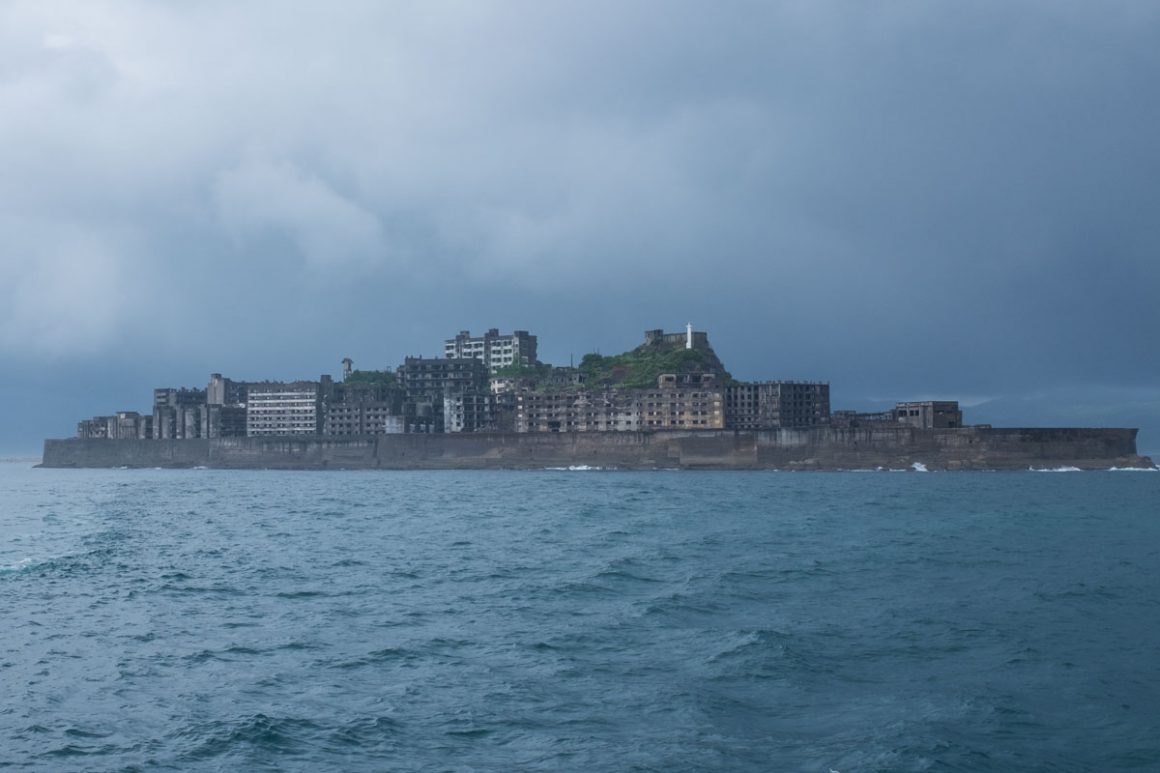
The company also built the first concrete structure in 1916 to house the island’s growing number of workers—a 7-storey apartment block. It was this same year that an Osaka newspaper first reported that the island “looked like a battleship.” Over the next 55 years more buildings were added including a school, hospital, town hall, pachinko parlour, and cinema, and Gunkanjima became more than just a place of work—it was a close community of workers which, in many respects, resembled a large family. Community leaders would make regular rounds of the apartments to check everything was okay at home or help resolve neighbourly issues before they escalated. There were even cases where, upon reaching retirement, workers would choose to remain on the island rather than go back to the mainland (something that was permitted if their son also worked in the mines).
But there is a darker side to Gunkanjima. The conditions for all workers were so hellish that it is difficult today to try imagine what a normal day must have been like. Operating in 12-hour shifts, the miners—boys as young as 14 among them—would take railed trucks 1,000 meters below sea level to the mine. With temperatures around 40°C and sea-water seeping in through the rocks, these workers would lie prostrate and crawl through tunnels only 60 cm in diameter to pick away at the precious coal. Explosions from natural gas leaks were by no means uncommon. And among the workers there were tens of thousands of Koreans and Chinese who lived on the island as forced labour under the careful watch of Mitsubishi Goshi Kaisha (today’s Mitsubishi Group). In the six years from 1939 until 1945 1,162 Japanese, 122 Korean, and 15 Chinese workers are believed to have died, some from drowning when the shafts flooded with seawater.
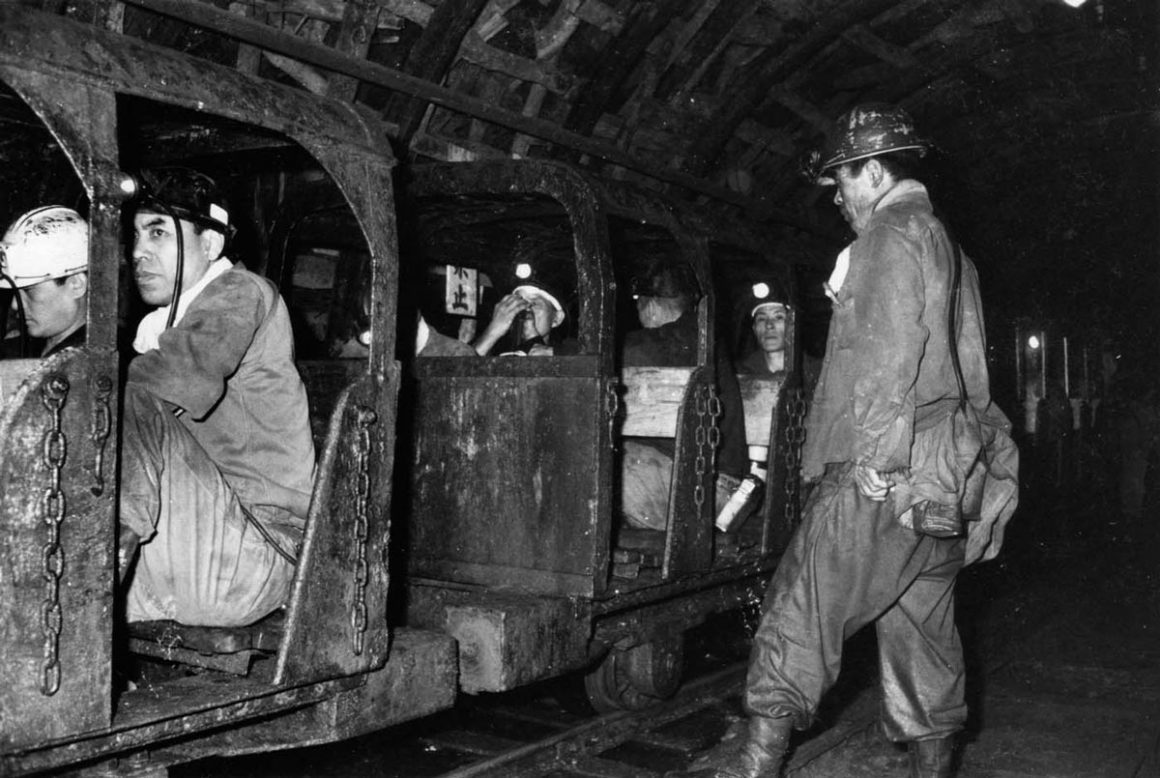
Between 1891 and 1974 Hashima Island would contribute approximately 16 million tons of coal to Japan’s reserves. But as the oil replaced as the primary source of energy Hashima began to suffer. At its peak in 1960, 5,127 people lived on the island, representing a population density of 83,600 per square kilometer, probably making it the most densely populated urban area the world has ever seen. Even today, Kwun Tong, the most densely populated district of Hong Kong, has a population density of less than 60,000 per square kilometer. But by the mid-1960s that population had dwindled to just over 3,000, and when the mine finally closed on 15 January, 1974, fewer than 2,000 people lived on the island. By 1975 all had left.
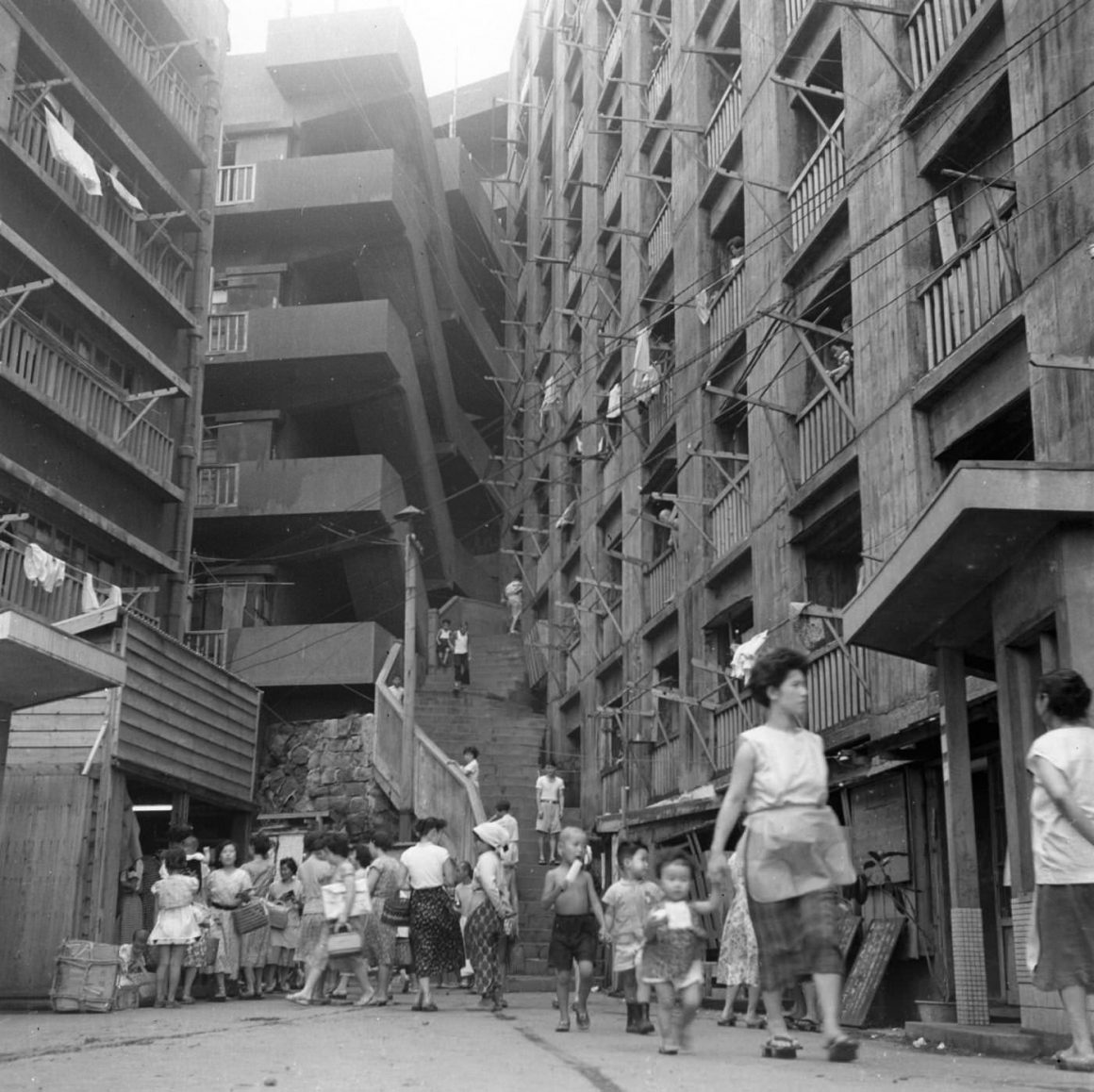
In 2006, the Japanese government applied to UNESCO to register Hashima Island as a World Heritage Site. The move was immediately opposed by Korea, incensed that the application made no reference to the forced labour that was an undeniable part of the island’s history. The application was finally approved in 2015 as part of Japan’s Sites of Japan’s Meiji Industrial Revolution: Iron and Steel, Shipbuilding and Coal Mining.
Touring Battleship Island
Many boat and ferry travel companies offer guided tours of Gunkanjima. These tours disembark on the island so that visitors can see and photograph the abandoned and dilapidated buildings close up; however, due to the structural instability of the buildings (some have collapsed completely), visitors must follow a set course around the outskirts and are under no circumstances allowed inside any of the buildings. Below are some other points to note about the tours:
- Departure depends on weather conditions on the day
- Even if the tour boat departs for Hashima Island, the seas need to be relatively calm for the boat to dock safely. Consequently, it may be the case that you will be able to see the island but not complete the ground tour. In this case, tour companies may make a token 10% refund to visitors as compensation. Some visitors have been known to unfairly complain about tours not landing on the island, but passenger safety is the first priority for these companies. See below for the best times to take the tour.
- Guided tours are in Japanese (even if the websites are in English)
There are five tour companies with permission to land on Gunkanjima.
- Gunkanjima Cruise (English/Japanese)
- The Gunkanjima Concierge Company (English/Japanese)
- Gunkanjima Landing & Cruise (English/Japanese)
- Gunkanjima Tour (Japanese)
- Ebisu Cruise (Japanese)
Prices don’t differ all that much. For a “cruising and landing” tour the price is about ¥4,000 per person including the ¥300 landing fee levied by Nagasaki City. Guided tours take approximately 3 hours, including a 1 hour tour of the island itself. All tour companies offer a morning (9-10am) and afternoon (1-3pm) cruise.
As mentioned, visitors are not permitted inside the building for safety reasons, so here’s some footage to give you an idea of what you’re missing.
When is the best time to visit?
Some tour companies usefully provide detailed statistics about departure and landing rates. I imagine most passengers would rather reschedule the cruise than set off but not be able to land on the island. July to October tours that depart but cannot land are around 5-10% mark (closer to 20% on a bad year). During the winter months (November to February) it seems that if the boat departs it will almost definitely be able to land on the island, and during winter the clear skies mean you can get a great shot of the island from the boat.
